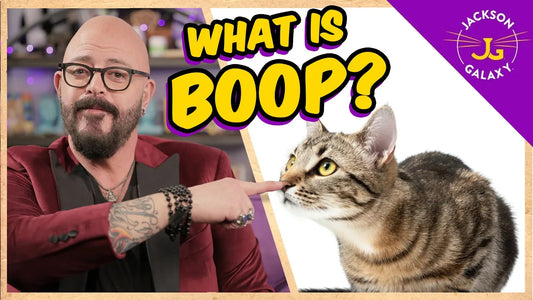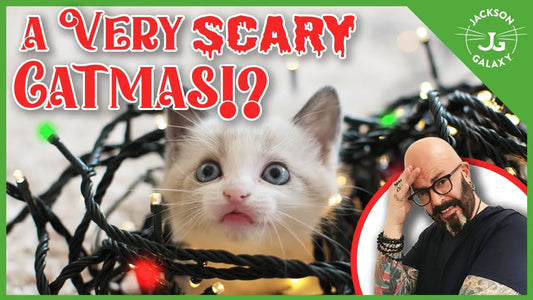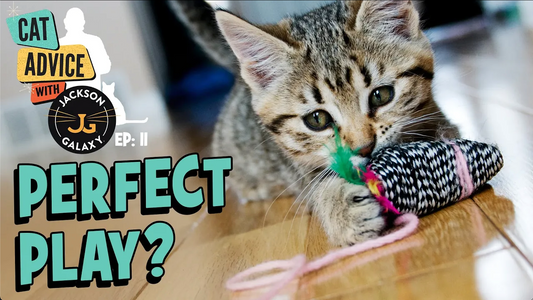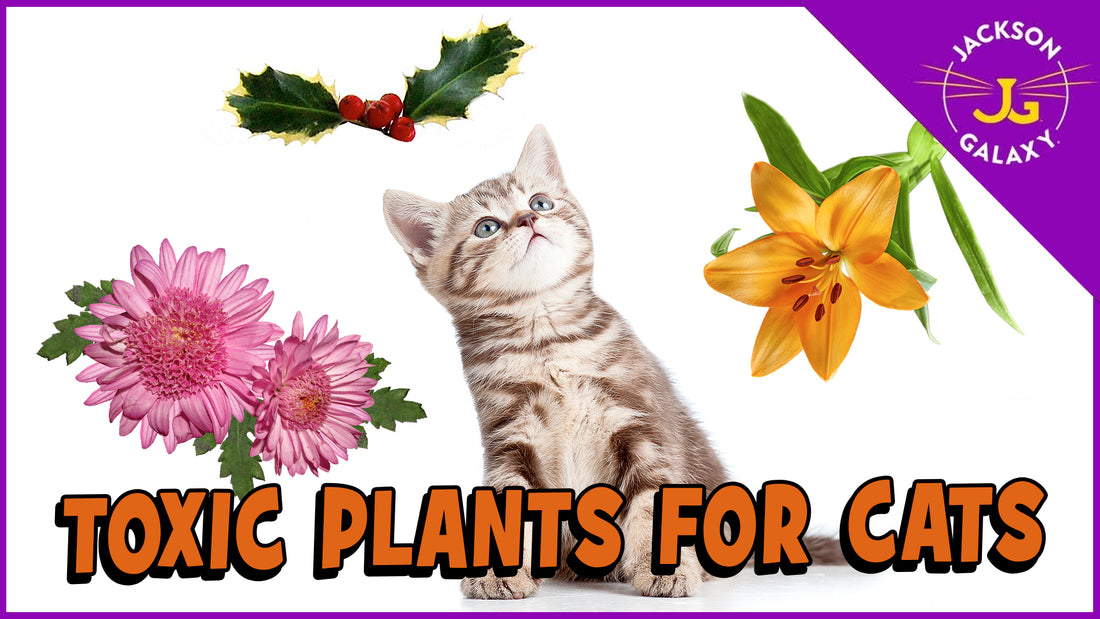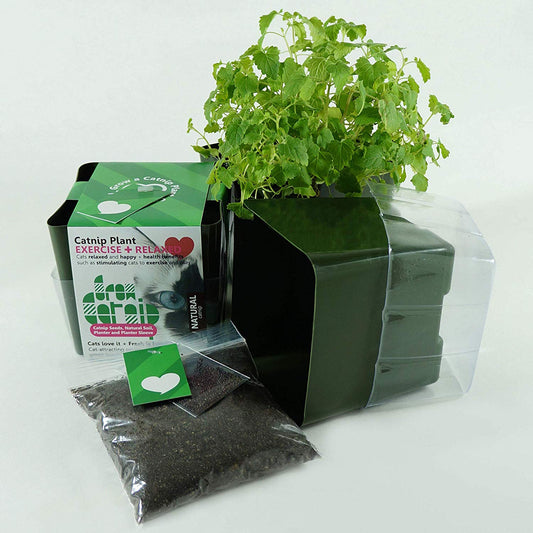Are your plants poisoning your cat? While gardening can be a fun and relaxing hobby, many common plants are extremely poisonous to cats—some can even kill in a single bite! Check out my list of toxic plants and learn how to cultivate a safe and cat-friendly oasis.
Do cats know not to eat toxic plants?
Cats lack the evolutionary know-how to avoid snacking on potentially harmful plants. While pasture-roaming animals like horses often have an innate sense of which plants are good for them, as obligate carnivores, cats had no reason to evolve that way. With the rise of indoor gardening, humans are cultivating all sorts of plants from around the world that our cats have never been exposed to. That can lead to some serious tummy troubles—or worse.
What happens if a cat eats a toxic plant?
With hundreds of plants recognized as toxic to cats, the spectrum of reactions can vary widely. Some might cause minor symptoms - mild skin irritation, upset stomach - but others pose severe risks, like kidney failure and even death. Even a few nibbles on certain plants can be incredibly dangerous. It's crucial for cat guardians to recognize these signs and seek immediate veterinary care if their cat shows any indication of plant toxicity. Time is of the essence in treating plant poisoning, and prompt intervention can greatly improve the cat's prognosis!
Plants to avoid
Lilies

Those gorgeous blooms might be the centerpiece of your bouquet, but for your cat, lilies are a one-way ticket to the emergency vet. Every part of the lily is toxic: ingesting even a tiny bit of the petals, stems, leaves, pollen, or water in a vase can send your cat into fatal kidney failure.
Also in the lily family are tulips and hyacinth. Although they are less toxic than true lilies, they can still cause serious problems if ingested, especially in large amounts.
Holiday hazards

Around the holiday season, it's essential to be mindful of the potential risks posed by popular seasonal plants like mistletoe, holly, amaryllis, poinsettias, and even Christmas trees. Pine needles are mildly toxic in small amounts, but their pointy edges can puncture your cat’s intestines and cause internal bleeding. For more information on how to keep your cat safe during the holidays, click here.
Rhododendrons

Rhododendrons contain toxins called grayanotoxins, which, if ingested by cats, can lead to a range of adverse reactions. Symptoms of rhododendron poisoning may include vomiting, diarrhea, hypersalivation, weakness, coma, hypotension, central nervous system depression, cardiovascular collapse, and in severe cases, death. Since rhododendrons are usually grown outside, they pose a bigger risk to outdoor cats.
Daffodils

Daffodils, also known as narcissus or jonquil, add a cheerful touch to home gardens but these vibrant blooms pose a hidden danger for cats. Daffodils contain toxic alkaloids, primarily concentrated in their bulbs, stems, and flowers. If ingested by cats, daffodils and other plants in the narcissus family can cause a range of adverse effects, including vomiting, diarrhea, abdominal pain, cardiac arrhythmias, difficulty breathing, extremely low blood pressure, and in severe cases, death.
Oleanders

Oleander, a common outdoor shrub known for its evergreen foliage and delicate flowers, is considered severely toxic to many animals, including cats. Frequently found in warm climates like Hawaii, California, and Texas, all parts of the plant contain cardiac glycosides, which directly affect the heart's electrolyte balance. These toxins cause can GI upset, cardiovascular abnormalities, and even seizures.
Sago Palms

The sago palm is a popular landscaping plant that many people also grow indoors. All parts of the sago palm, including its seeds, leaves, and roots are severely toxic to cats. According to the ASPCA, if an animal ingests any portion of the plant, up to 50% of cases are fatal, but early veterinary intervention can increase the chances of survival. Clinical signs of sago palm toxicity in cats include vomiting, bloody stool, jaundice, increased thirst, bruising, and hemorrhagic gastroenteritis. Given the serious health risks associated with sago palm ingestion, it's crucial for cat guardians to be aware of this plant's toxicity and take proactive measures to keep their feline companions safe!
Daisies

These common garden flowers contain pyrethrins, which are neurotoxins that are absorbed through the bloodstream. Pyrethrins are also found in various insecticides used to control pests. While daisies aren’t as toxic as some other plants on this list, ingestion can still lead to symptoms such as gastrointestinal upset, drooling, nausea, and, in severe cases, neurological issues. Keep the daisies away from your feline companions to ensure their safety and well-being!
Marijuana

With the rising popularity of recreational and medical marijuana usage, it’s essential for cat guardians to keep their stash away from their cats! Cats can accidentally ingest marijuana by consuming cannabis-infused products, inhaling secondhand smoke, or directly ingesting plant material. The psychoactive compound THC (tetrahydrocannabinol) in marijuana affects cats differently than humans, often leading to symptoms such as lethargy, ataxia, dilated pupils, hypersalivation, vomiting, urinary incontinence, and in severe cases, tremors, seizures, or coma.
Ivy

English ivy, along with other varieties like California ivy, poses a significant risk to our feline friends if ingested, causing symptoms such as gastrointestinal distress, diarrhea, excessive drooling, and nausea. While ingestion of English ivy may not always be fatal, it can lead to discomfort and health complications for our cats. This is one of many reasons why I encourage everyone to keep their cats indoors, especially in areas where toxic plants like ivy grow freely!
How to Cat-Proof Your Plants
I know this list of toxic plants might seem a bit daunting, but don’t worry! There are ways for our cats and plants to live in harmony. Check out the ASPCA’s list of toxic plants and do a sweep of your home. Consider swapping out hazardous plants for cat-friendly alternatives or placing them out of reach using hanging planters or wall-mounted shelves.
Providing cat grass can satisfy your cat’s urge to chew on greenery while deterring them from your other plants — plus, it’s rich in fiber, niacin, and B vitamins! You can also try using a motion-activated air blaster like this to keep your cats away from toxic plants.
And of course, don't forget to give your cats plenty of indoor enrichment to keep them entertained and less likely to go exploring!
As cat guardians, it's our responsibility to stay informed. By taking steps to educate ourselves and create a hazard-free environment, we can ensure our cats live long and healthy lives. Let's continue to be vigilant for our animal family and advocate for their safety in every way we can!

